MLB Panic Meter on These 7 Ice-cold Players Early in 2025
MLB Panic Meter on These 7 Ice-Cold Players Early in 2025

On the one hand, the 2025 Major League Baseball season is only about two weeks old. At the start of play on Friday, only 190 of the scheduled 2,430 games (7.8 percent) had been played. And while we all know to wait until Memorial Day to start paying much attention to the standings, we should probably also wait until the end of April to start worrying about slow starts for individuals.
Let's not forget: Aaron Judge was batting .178 and on a 162-game pace of 24 home runs 27 games into last season.
On the other hand, though, 7.8 percent of the season equates to around midway through the second quarter of a team's second game of the NFL season, and people would be losing their ever-loving minds if Patrick Mahomes had one of the worst passer ratings in the league at that point.
So let's play a little early panic meter game, rating how concerned we are with these ice-cold starts on a scale from 0-10; 0 meaning calm, cool and collected while 10 is a full-blown meltdown level of concern.
Every player on this list was top 100 in the consensus average draft position for fantasy baseball heading into the season, per Fantasy Pros, meaning both fans of the teams involved and fantasy owners are freaking out at least a little bit at this point.
(One player not on the list who at least merits mentioning is Gunnar Henderson, who is batting .160 with no RBI through six games. He missed most of spring training and the first few games of the regular season with an intercostal strain and is just taking a bit of time to get back into the swing of things. Can't imagine anyone is panicking about his early start, but maybe that changes if he continues to struggle for another week.)
Willy Adames, SS, San Francisco Giants
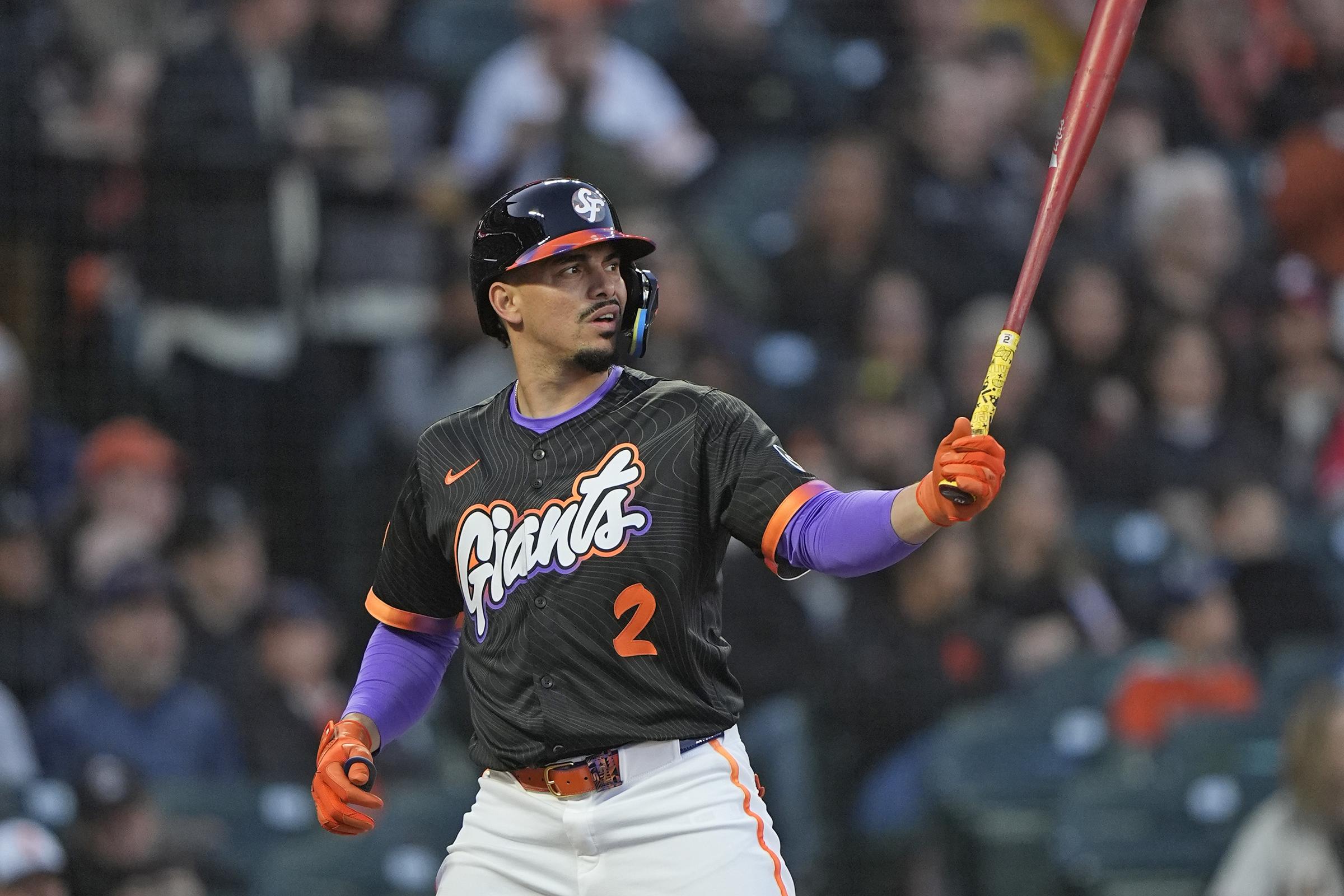
Early Returns: .184/.241/.224, 54 PA, 0 HR, 6 RBI, 1 SB
Panic Meter: 6.1
San Francisco gave Willy Adames $182M to finally put some real pop in that lineup for the first time since Barry Bonds was still there.
Over the previous four seasons, Adames had averaged 31 home runs and 100 RBI per 162 games played, and he hit free agency fresh off his best season yet.
However, he hasn't even flirted with a home run yet, let alone actually hit one. And his value "added" on defense thus far has been much more in line with what he provided last season than what he did in the previous half-decade, which is most unwelcome news for the Giants, who have pretty well committed to him at shortstop for the next seven years.
The silver lining on this early storm cloud is that March/April traditionally has been Adames' weakest month, posting a .678 OPS compared to at least .720 in every other month of his career. In 2021, he had a .508 OPS and then exploded for at least an .850 in each of the next four.
With any luck, that's how the San Francisco chapter of his career will play out.
Not the most promising start, though, for a player whose ability to homer in his new home park was already a major concern on the day he was signed.
Dylan Cease, RHP, San Diego Padres
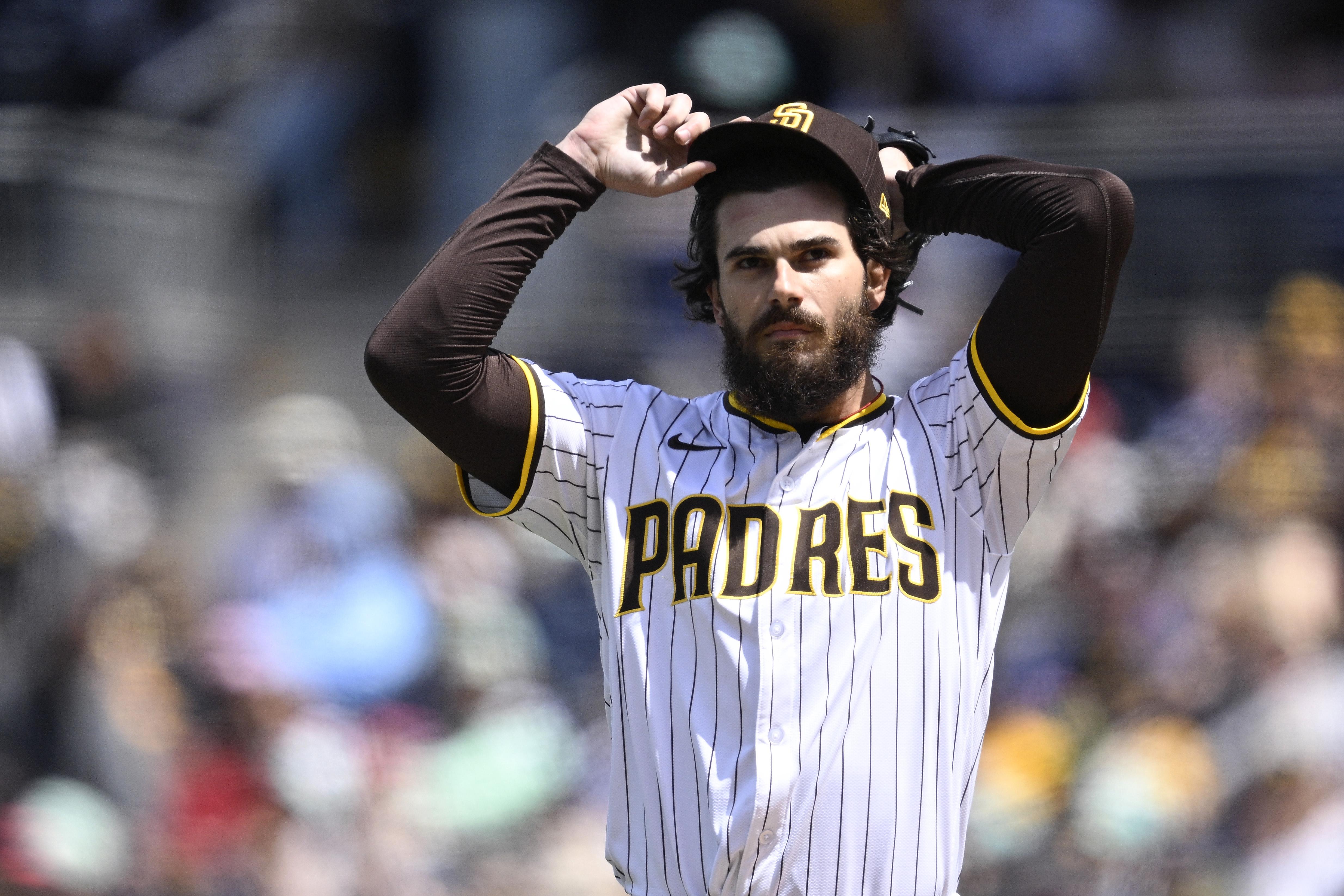
Early Returns: 14.2 IP, 17 H, 13 ER, 6 BB, 18 K, 7.98 ERA, 1.57 WHIP
Panic Meter: 0.1
Dylan Cease has made three starts thus far for the Padres.
One of those was pretty swell, carrying a shutout into the seventh inning against Cleveland before allowing one run and departing.
One was underwhelming, allowing three runs in 4.1 innings of work in his 2025 debut against Atlanta.
The third and most recent appearance, however, was a career-worst disaster, allowing nine earned runs to the Athletics. No home runs in that mess, either. The six runs allowed in the first inning were just line drive hit after line drive hit, before the A's tacked three more on the board in the third inning on some seeing eye singles.
After that great big dud, Cease has already allowed more earned runs through three starts (13) than he did through his first eight starts last year (12).
What has been fun about the start to the year is Cease has expanded his pitch arsenal, bringing back the changeup he had mostly abandoned over the past three years while also working in a sinker he pretty much hadn't thrown since 2022, and only sparingly back then. Perhaps being around Yu Darvish has rubbed off on Cease in that regard.
However, his four-seamer has basically been a batting practice pitch so far, opponents hitting .471 against it. At least it's not a velocity issue, humming it in there at just about the exact same speed he did all last season. Just a bit unfortunate (and maybe a bit erratic) through three starts.
Ready for the fun part?
Despite the 7.98 ERA, both Cease's FIP (2.67) and xFIP (3.37) are lower than where he has finished any previous season. If you think you can pry him away from a panicking fantasy owner, give it your best shot. The two-time Cy Young vote recipient pitching in his contract year ought to bounce back just fine.
Willson Contreras, 1B/DH, St. Louis Cardinals

Early Returns: .102/.170/.143, 54 PA, 0 HR, 3 RBI, 22 K
Panic Meter: 8.6
It's one thing to have some bad early luck in the BABIP department, but Willson Contreras isn't even putting balls in play, striking out in a staggering 41 percent of plate appearances.
Contreras was never exactly Luis Arraez at the dish, striking out in at least 20 percent of plate appearances in each previous season in the big leagues.
This is a bit excessive, though.
He has already struck out on sweepers as many times this season (eight) as he did in the entire 2024 campaign. And the jury appears to be out on his struggles with that pitch in particular, as the rate at which sweepers are being thrown to him has increased by nearly 130 percent. (For his career, he is 19-for-100 with one HR and 36 K in ABs ending on a sweeper.)
Even when he does hit the ball, it's not with his usual pop. Contreras' average exit velocity had hovered in the 88.2-91.6 MPH range in every previous season. He's at 85.4 with one barrel in 28 batted balls.
At least the move to first base hasn't been part of the disastrous start, going a perfect 53-for-53 on fielding chances thus far. That's minimal consolation as he averages 4.4 whiffs per hit, though.
Contreras sputtered to the finish line last year, too. It wasn't this bad, but over his final 24 games before ending the season prematurely due to a fractured finger, he posted a .694 OPS with just two home runs in 104 trips to the plate.
The three-time All-Star turns 33 next month, and maybe they waited too long to get him out from behind the plate to salvage his bat. If he doesn't rally soon, we're going to start mentioning him in the same breath with Yasmani Grandal, who absolutely dropped off a cliff in his age-33 season, while still owed a ton of money.
Yainer Diaz, C/DH, Houston Astros
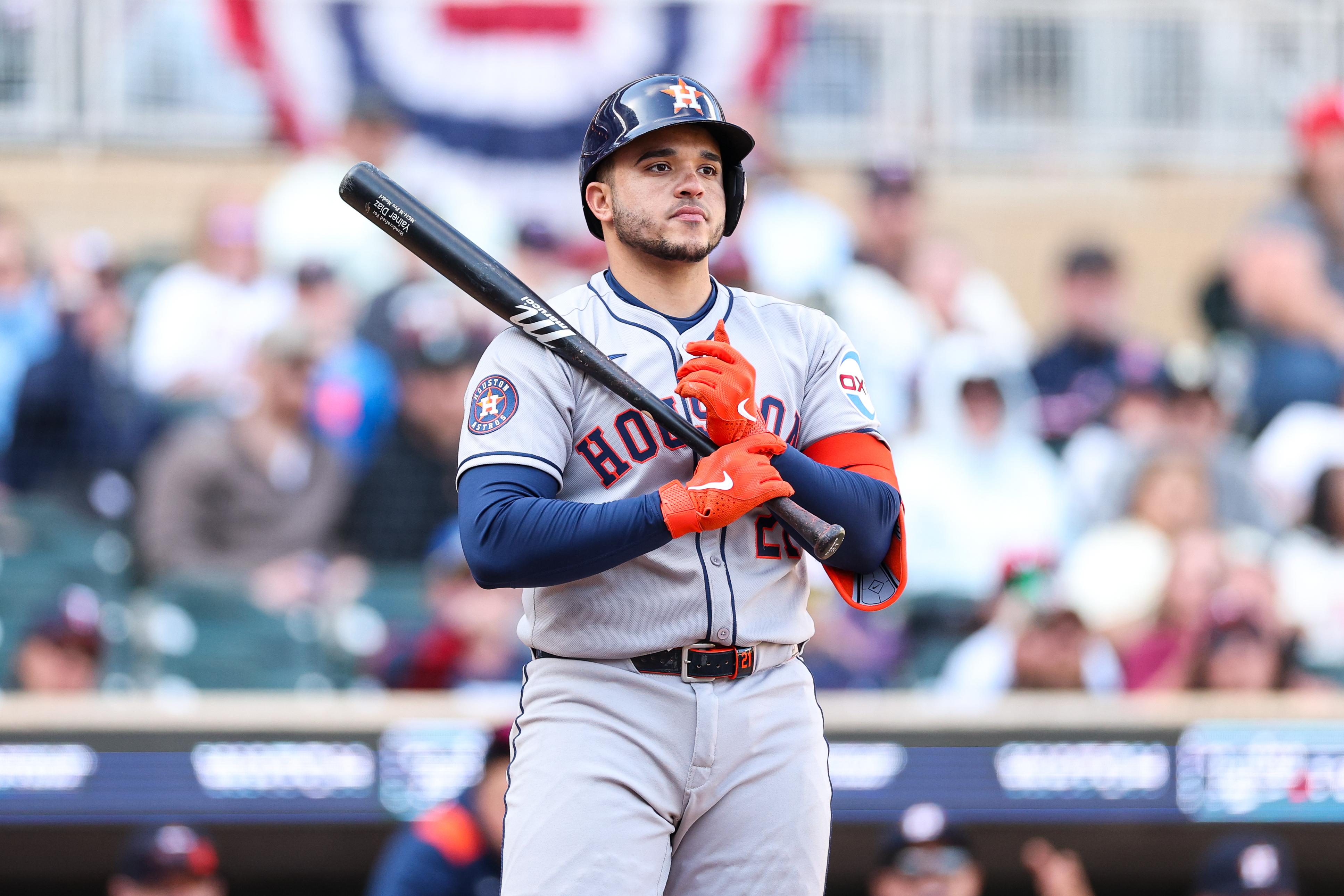
Early Returns: .061/.139/.061, 36 PA, 0 HR, 1 RBI
Panic Meter: 2.5
One week into last season, Yainer Diaz looked like the runaway favorite to start at catcher for the American League in the All-Star Game. En route to playing in 148 games and posting a .299 batting average, he was 12-for-26 with a pair of home runs.
Bit of a different story this time around, as Diaz has just two singles to show for his 36 trips to the plate.
What's strange here is that after two mostly successful seasons at the dish, Diaz has changed his approach in the box a bit.
Admittedly, I'm still figuring out what to make of the bat tracking data that Statcast added two seasons ago, but comparing 2025 to the past two seasons in the batting stance portion of Diaz's profile does jump out a bit.
His depth in the box is three inches shallower than usual, there's a little more distance between his feet and his average intercept point is nearly six inches further in front of the plate, as well as a few inches further away from his center of mass. This has resulted in way more fly outs and pop outs than usual, as well as more strikeouts.
Goodness only knows why he/Houston decided to tweak what was a good swing, but Diaz was struggling in spring training, too (.574 OPS).
Maybe they tweak it back and he starts raking again?
Or maybe this season is less like 2024 and more like 2023, when a .505 OPS through nine games turned into an .873 OPS the rest of the way?
Either way, not overly concerned here, as it's hard to imagine the 26-year-old who posted a 122 OPS+ over the past two seasons suddenly forgot how to hit. Houston always seems to have a couple of key guys get out to a slow start, and then they turn it around.
Luis Robert Jr., OF, Chicago White Sox
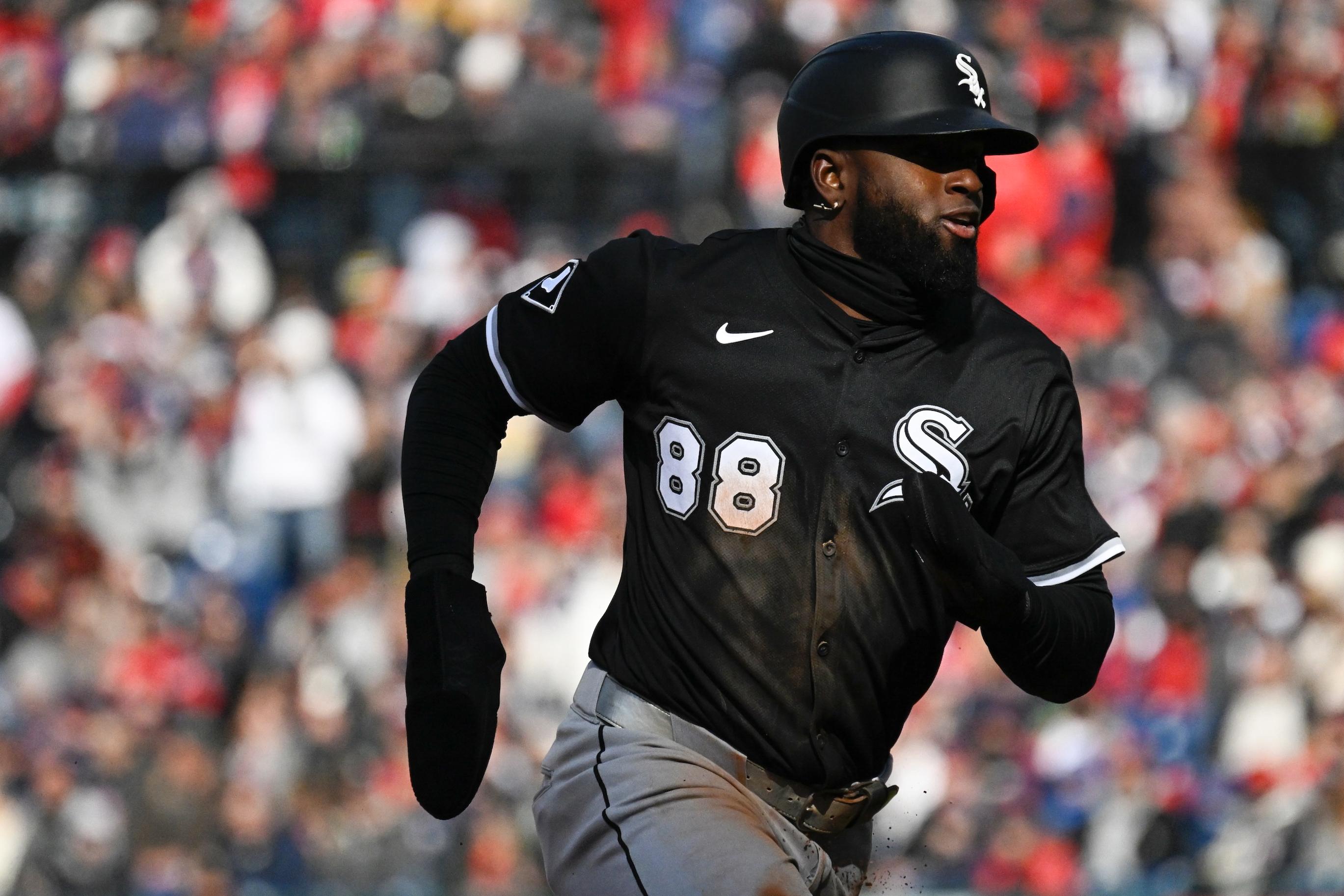
Early Returns: .154/.244/.179, 45 PA, 0 HR, 1 RBI, 3 SB, 2 CS
Panic Meter: 3.1
In an even larger sample size (57 PA) than what he has had thus far in the regular season (45 PA), Luis Robert Jr. was dynamite in spring training. He hit .300 with four home runs and posted a .966 OPS, on par with when he really broke onto the MLB scene back in 2021.
But Opening Day came and he flipped a switch in the wrong direction, with just seven total bases through 11 games played.
Here's the good news: He's running. Robert went 3-for-5 in stolen base attempts over the final 29 games of last season, and has already matched that mark this year, despite the limited number of times on base. He even attempted three stolen bases in a single game the other day, which is something he did only once in all of 2024.
He's also displaying solid range in center thus far. Whatever is plaguing him during this slow start, it doesn't appear to be any sort of lower-body injury, which is what you always worry about with Robert.
He's also drawing walks and chasing bad pitches at the best rates of his career, so he's seeing the ball pretty well out of the pitcher's hand.
He just needs to get that launch angle ironed out, popping out on 22.2 percent of his balls put in play, while his line drive rate is a miserable 11.1 percent.
For his career, that 2-to-1 ratio has been more of a 3.5-to-1 ratio in the other direction, posting a LD% of at least 24 in each previous season of his career.
Once he gets that fixed, Robert ought to turn things around and cement himself as a top chip on the trade block—provided he stays healthy.
Chris Sale, LHP, Atlanta Braves
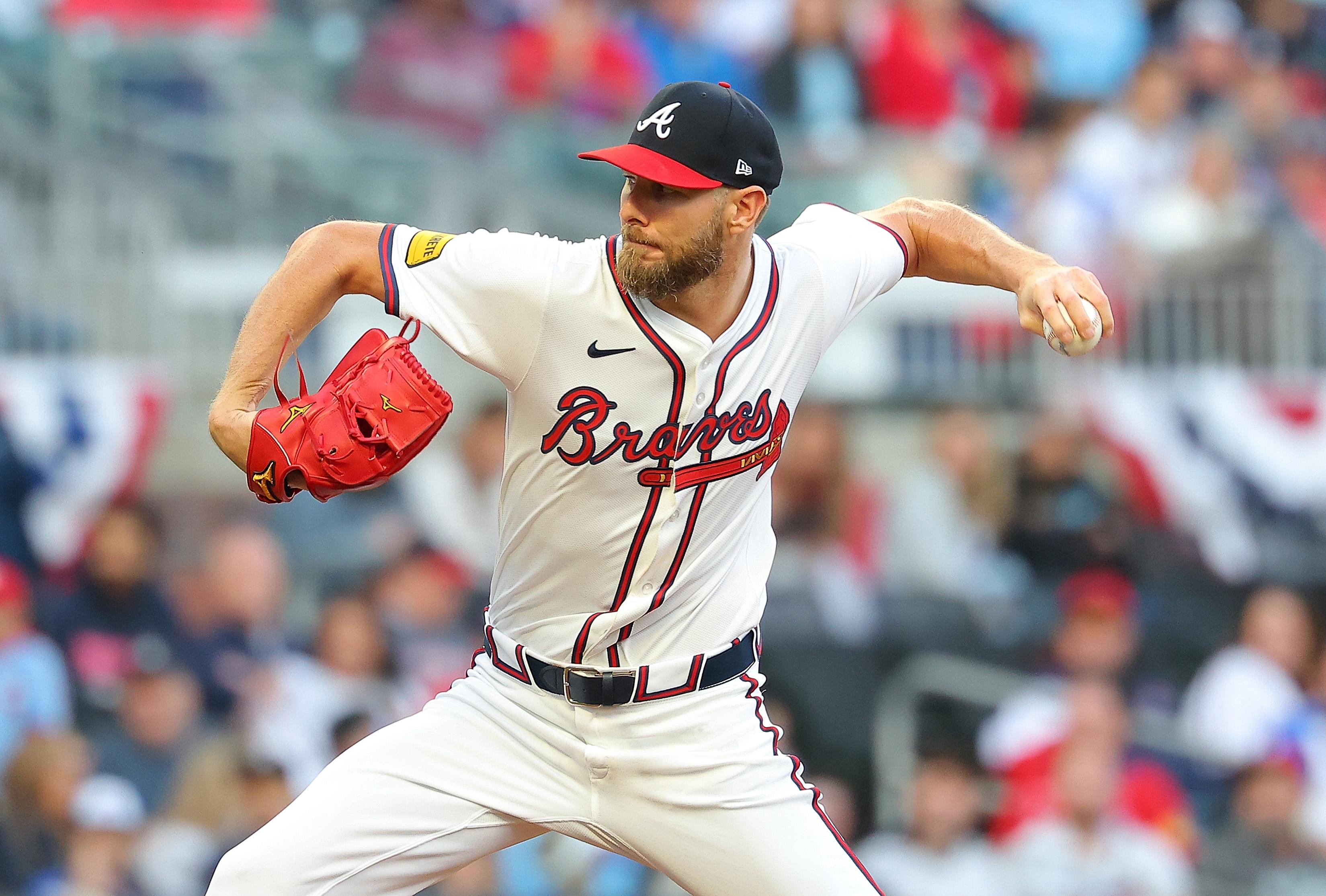
Early Returns: 14.2 IP, 19 H, 11 ER, 1 BB, 17 K, 6.75 ERA, 1.36 WHIP
Panic Meter: 5.7
The schedule makers did Chris Sale no favors whatsoever in the early going, his first three starts of the year coming against the Padres, Dodgers and Phillies. And though he managed to post a stellar ratio of 17 strikeouts to just one walk, he went five or fewer innings and allowed three or more earned runs in each appearance thus far.
Lackluster (or woeful) beginnings have kind of been Sale's thing in his older age, though.
He had an 11.25 ERA three starts into the 2023 campaign, but gave Boston a 3.38 ERA the rest of the way. Last year wasn't as drastic, but Sale was nothing special in his first three starts with Atlanta (4.58 ERA) before posting a 2.14 ERA over his next 26 starts, winning the NL Cy Young.
Perhaps he is on a similar trajectory.
And much like Dylan Cease, Sale has a drastically better FIP (3.04) and xFIP (3.15) than his ERA (6.75). Moreover, it has mostly been the four seamer that has betrayed Sale, with opponents batting 9-for-17 (.529 AVG) against it, compared to 10-for-45 (.222 AVG) against the rest of his arsenal.
What is more than a little concerning, however, is the velocity on that fastball.
In April 2024, Sale's four-seamer came in at an average 94.7 MPH. And after sitting at 94.2 MPH in his first start of this season, he was at 93.1 MPH in his second start and 92.7 MPH in the most recent one.
It wasn't until his 26th start last season that he went below 93.8 MPH in a game, which may have been the beginning of the back issues that cut short his season.
And the real reason for panic here is that Atlanta simply cannot afford to lose another pitcher or have their most important one struggle with velocity issues for any prolonged stretch of time. Spencer Strider should be back soon, but they're already starting Bryce Elder, Grant Holmes and AJ Smith-Shawver on a regular basis while trying to claw out of what was a 1-8 start to the year.
Keep an eye on that radar gun for Sale's next start against Tampa Bay. If he's comfortably in the 94 MPH vicinity, this panic meter drops to almost nil. But if he ends up below 93 again, early worries will turn into full-blown panic attacks and frantically checking to see if he's going on the IL with "dead arm" or something of the sort.
Mark Vientos, 3B, New York Mets
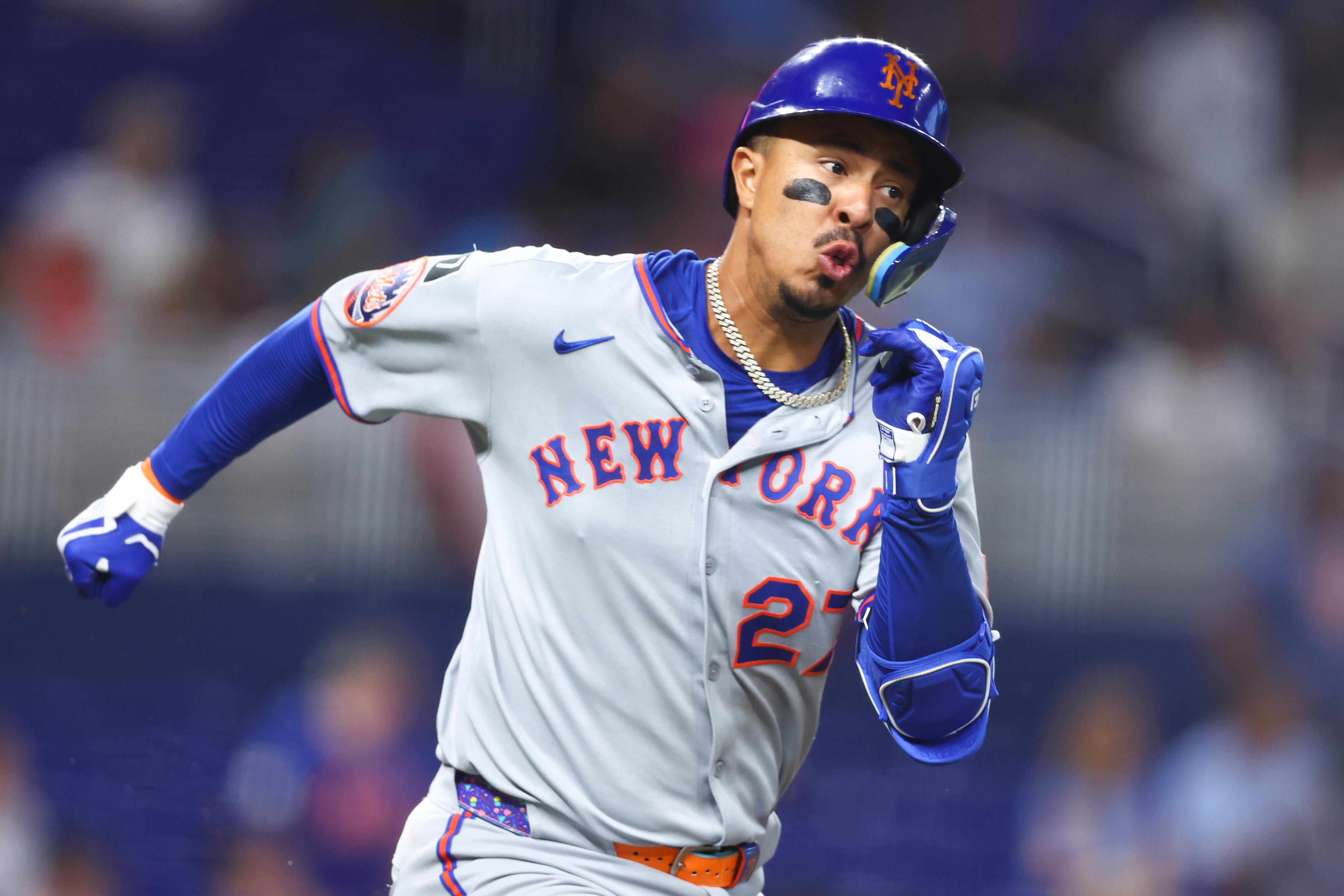
Early Returns: .119/.245/.167, 49 PA, 0 HR, 1 RBI
Panic Meter: 1.2
After striking out in 30 percent of plate appearances in his first three seasons while averaging more than 4.5 strikeouts per walk, Mark Vientos' plate discipline has improved by leaps and bounds, both striking out at the lowest rate and drawing walks at the highest rate of his career.
And when he does put the ball in play, he's generally getting pretty good wood on it.
Though his hard-hit percentage isn't worth writing home about, he's boasting the highest line-drive rate of his career and has an expected weighted on-base average on par with his norm and slightly better than the league average.
He's just having some horrific luck thus far, with a BABIP 172 points below where he finished last season, and with four of his five balls with at least a 102 MPH exit velocity going for an out (including one smoked GIDP.)
Last year, he had 85 balls with at least a 102 MPH exit velocity, 57 of which (67 percent) went for hits. To be 1-for-5 to this point is a tough sample size.
But it shouldn't be long before the third baseman who had a .998 OPS in 13 postseason games starts avoiding gloves and gets back into a groove. Though, if you're worried about a "sophomore" slump from a player who had a negative bWAR in each of 2022 and 2023 before finally breaking through last year, that's understandable.








